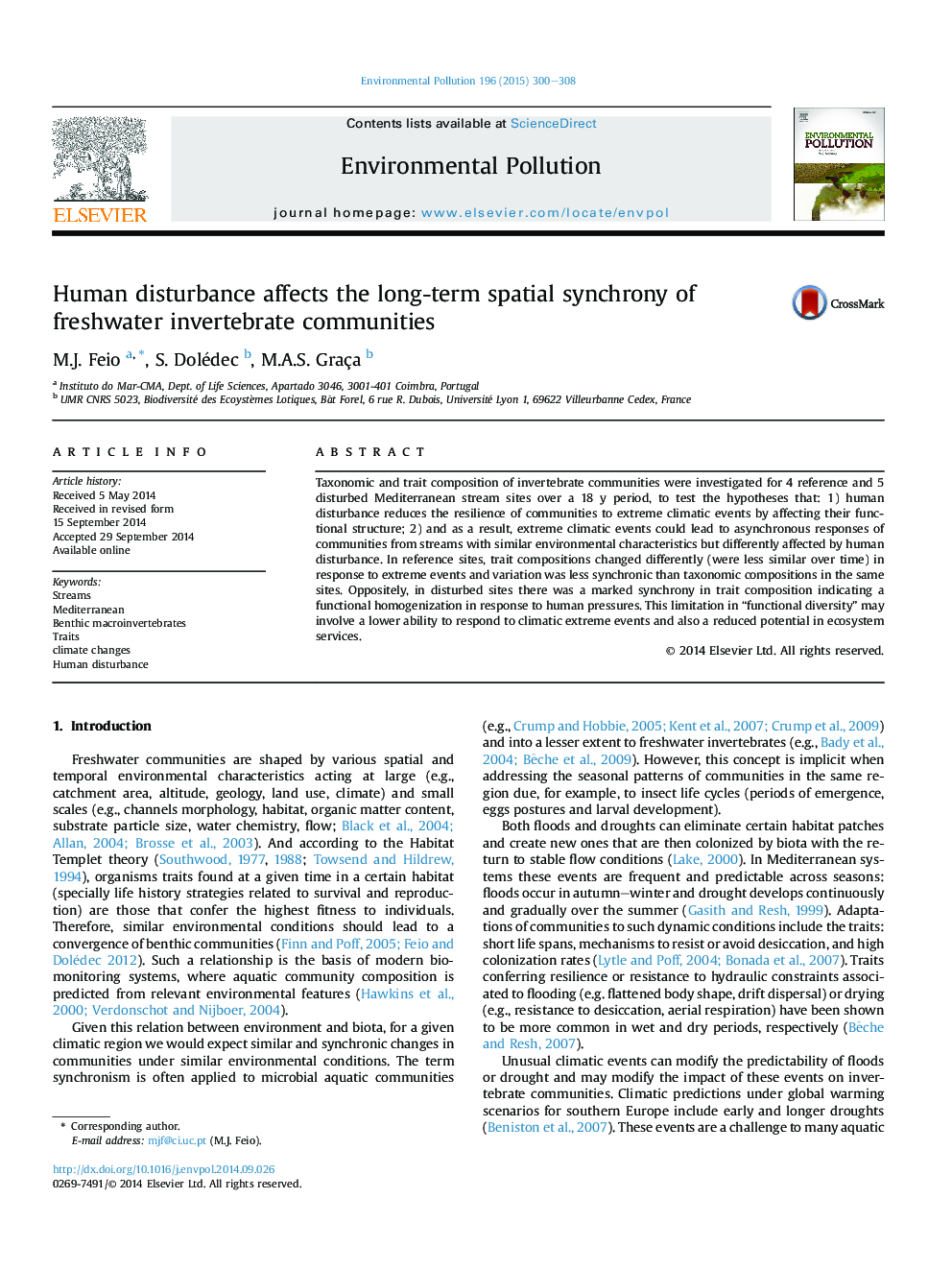| Article ID | Journal | Published Year | Pages | File Type |
|---|---|---|---|---|
| 6317944 | Environmental Pollution | 2015 | 9 Pages |
Abstract
Taxonomic and trait composition of invertebrate communities were investigated for 4 reference and 5 disturbed Mediterranean stream sites over a 18Â y period, to test the hypotheses that: 1) human disturbance reduces the resilience of communities to extreme climatic events by affecting their functional structure; 2) and as a result, extreme climatic events could lead to asynchronous responses of communities from streams with similar environmental characteristics but differently affected by human disturbance. In reference sites, trait compositions changed differently (were less similar over time) in response to extreme events and variation was less synchronic than taxonomic compositions in the same sites. Oppositely, in disturbed sites there was a marked synchrony in trait composition indicating a functional homogenization in response to human pressures. This limitation in “functional diversity” may involve a lower ability to respond to climatic extreme events and also a reduced potential in ecosystem services.
Related Topics
Life Sciences
Environmental Science
Environmental Chemistry
Authors
M.J. Feio, S. Dolédec, M.A.S. Graça,
